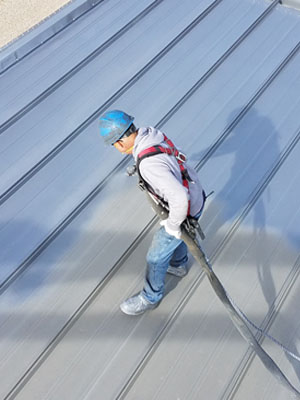
The determinants of successful polyurea applications are material selection, proper application, equipment, and surface preparation. One of the most crucial is surface preparation. This alone can determine the success or failure of most polyurea applications.
Step One: Assess the Conditions:
Assess the condition of a surface for contamination before beginning any work. Surfaces, such as parking lots or other concrete surfaces, can contain greases, oils, salts, acids, and an array of other contaminants that can impair the adhesive properties of the coating to be applied.
Step Two: Clean the Surface
Use a commercial-grade degreaser or hydrocarbon dispersant. An oil-dispersant is a mixture of emulsifiers and solvents that break up oil into small droplets. Emulsifiers help prevent liquids from separating, much the way eggs are used in mayonnaise to keep the oil from separating. Extraction products for chloride and sulfate may also be needed. Sometimes abrasive blasting, also called shot-blasting, is used in conjunction with chemical clean up to ensure a thorough, deeper clean. Proper adhesion of the product to the surface can make or break a project.
Step Three: Prep the Surface
Repair and replace any caulking or sealants as well as any damaged concrete surfaces. Cracks, grooves, and expansion joints may need to be filled with the proper sealant. There are guidelines to determine the depth at which depressed areas should be filled.
Step Four: Prime the Surface
Once the above is accomplished, the surface is ready to be primed, usually with an epoxy. This is followed by applying aggregate to the wet epoxy. Now, the area can be masked off to protect vital areas from overspray, such as fixtures and vertical surfaces. Consider how the wind may carry the overspray and prepare areas for that possibility.
Follow the Manufacturers’ Recommendations
Always follow the manufacturer’s recommendations. Also consider local environmental compliance requirements with using any cleaning agents since some cleaners are not permitted to go into waste water drains. In this case, containment and off-site disposal may be required.
For more information on Polyurea surface preparation and applications, visit the PDA website pda-online.org.





